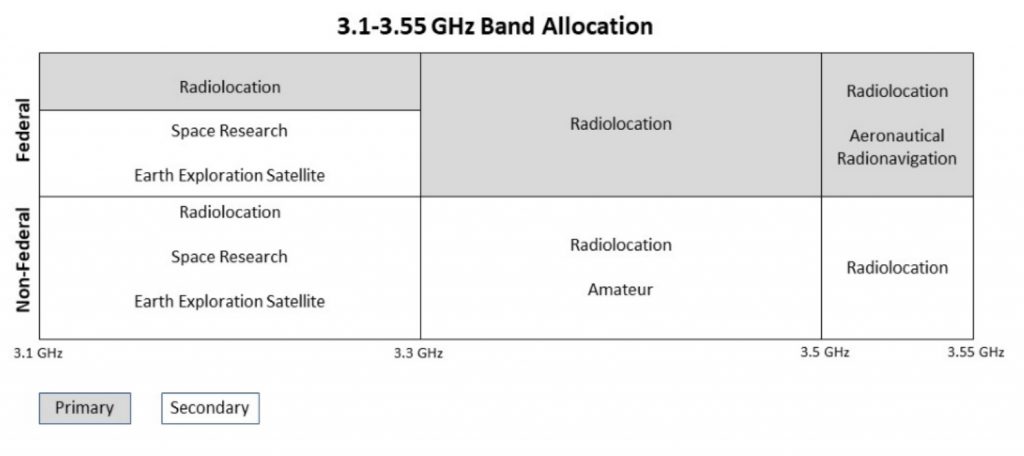The FCC will vote later this week on two items aimed at freeing up more spectrum for commercial use. The actions involve 100 MHz of spectrum in the 3.45 GHz band (between 3.45 and 3.55 GHz) and 50 MHz of spectrum in the 4.9 GHz band (between 4940 and 4990 MHz.)
Both items include an order and a further notice of proposed rulemaking (FNPRM).
FCC to Free Up Spectrum in 3.45 GHz Band
The 3.45 GHz band is a portion of a larger band between 3.3 and 3.55 GHz that is used by federal and non-federal users, with non-federal users operating on a secondary basis.

The order that the FCC will vote on this week would eliminate the non-federal allocation between 3.3-3.5 GHz and non-federal users would move to other bands.
The FNPRM seeks comment on allowing non-federal users to use the spectrum between 3.45-3.55 GHz on a co-primary basis with federal users. According to the order, the Department of Defense and the National Telecommunications and Information Administration agree that “commercial users operating pursuant to flexible use licenses can be accommodated in the 3.45-3.55 band at full power.”
In August, FCC Chairman Ajit Pai said the commission would “move quickly” to conduct an auction for commercial licenses in the band.
The spectrum could be attractive to network operators deploying 5G because it is adjacent to the CBRS band, which was the focus of a recent auction that drew strong participation from network operators. As Pai has also noted, the C-band is on the other side of the CBRS band and when combined, the 3.45 GHz band, the CBRS band and the C-band would comprise a 530-MHz swath of spectrum for 5G.
4.9 GHz Spectrum Also to be Freed Up by FCC
The 4.9 GHz band has been allocated to public safety for nearly 20 years. But as the FCC notes in a fact sheet included with the 4.9 GHz order and FNPRM, only 2,090 of 90,000 public safety entities eligible to obtain licenses in the band have done so.
The order would allow one statewide public safety licensee per state to lease some or all its spectrum to third parties, including commercial users. If a state has only a single statewide licensee, that entity would become the state lessor, while states with more than one statewide licensee would be required to designate one of those licensees to be the state lessor.
The FNPRM would make permanent a freeze on new license applications that was implemented earlier this month and would grandfather all current public safety licensees. It proposes to allow states without a statewide licensee to obtain such a license. In addition, it seeks comment on how to facilitate “robust use” of the leasing framework through dynamic spectrum sharing and other initiatives.
The order and FNPRM notes that fixed wireless service providers have expressed interest in using the 4.9 GHz band and that some countries are considering using it for 5G.



